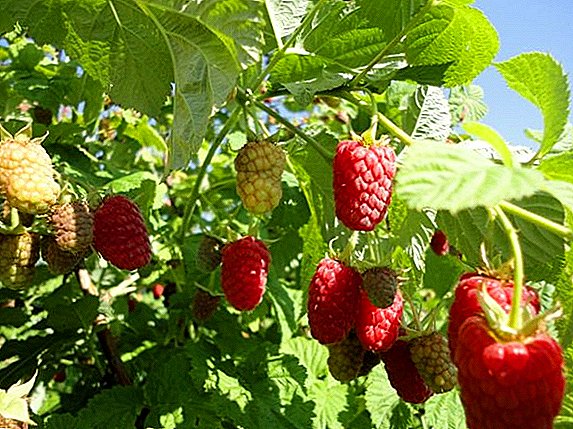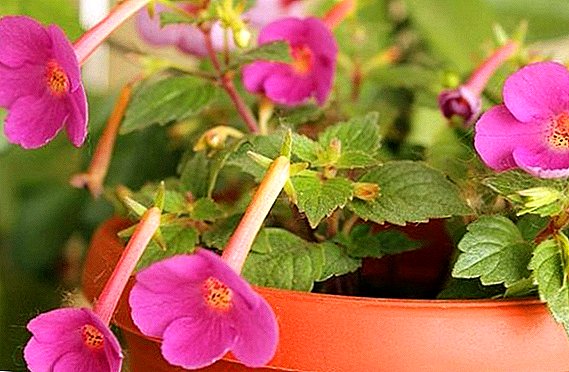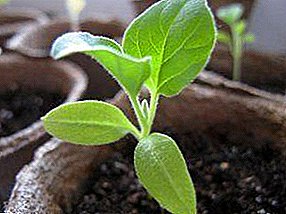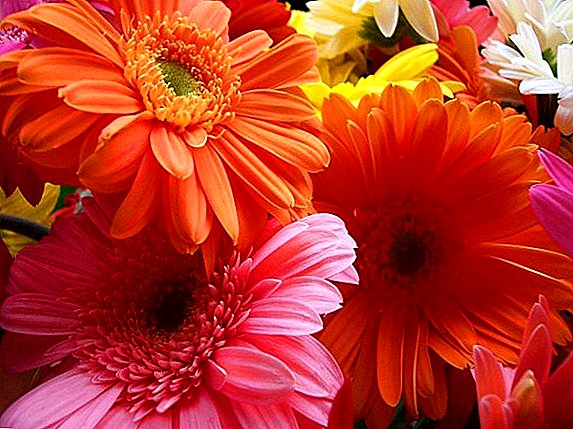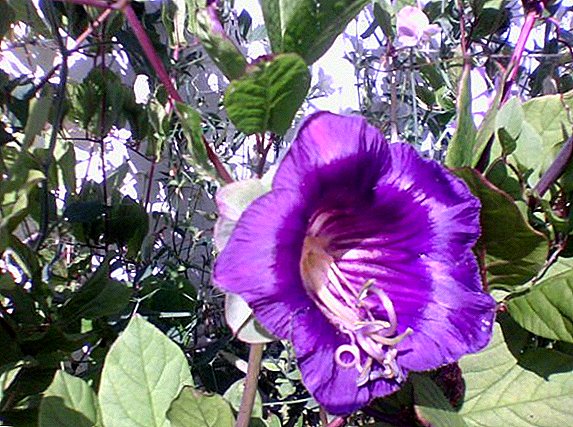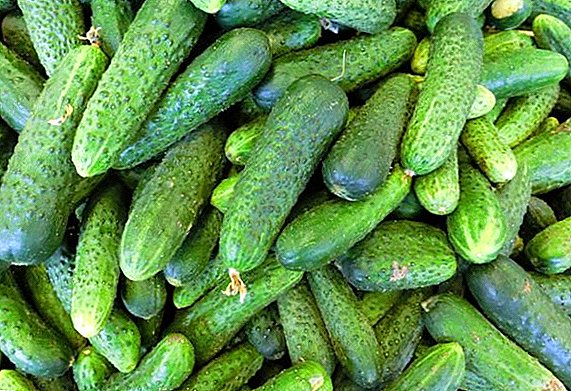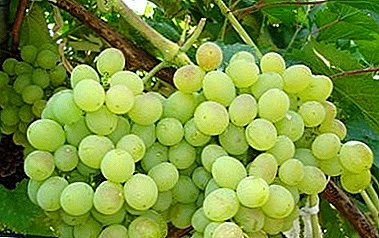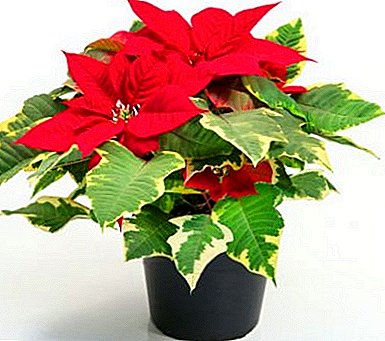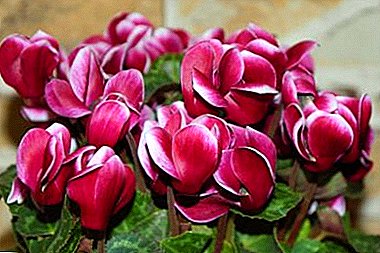
Cyclamen is a flowering plant that is widely spread thanks to breeders who have developed many hybrids and also cultivated several species most suitable for home gardening. Given the characteristics of care and maintenance, the cultivation of a plant is considered to be rather laborious, but worth it. In the article you will read about taking care of him, see the photo.
History of development and description
The history of a perennial plant with dark green heart-shaped leaves dates back to the 16th century. Then cyclamen (also "alpine violet", "dryakva", "pork bread") first appeared in Europe and was grown mainly in botanical gardens.
For several centuries, breeders have brought indoor flower species, as well as many hybrid varieties of different colors. Some types of cyclamen are distinguished by a corrugated form of petals.
In everyday life, the most common European and Persian varieties. They are very popular with gardeners, because The flowers are characterized by a rich palette of shades, and on the leaves there is a distinct pattern of marble-white veins.
On the basis of the Persian cyclamen, the Dutch brought out hybrid varieties characterized by a long flowering period. Description and photos of the most beautiful species of cyclamen, as well as information about their care, you will find in a separate article.
A photo
Below you will see a photo of a flower:





Conditions of detention
Distinctive features of cyclamen are beautiful appearance and pleasant delicate aroma. While other cultures bloom in summer, and in the dormant period they dive in autumn and spring, Alpine violet in winter pleases its owner with lush bloom, and in the summer restores strength. You can find out when and how the cyclamen blossoms and what kind of care a plant needs during a dormant period here.
Growing a plant at home "in captivity", comply with certain conditions:
- Shine. Cyclamen tolerates diffuse daylight well. It is necessary to protect it from direct sunlight.
- Humidity. Dryakva leaves are sprayed at the stage of their growth and development. The plant loves moisture, it is recommended to keep the pot away from the heating pipes, and in the winter to create an artificial fog, placing containers with water around the flower. In autumn and winter, the plant is watered more often than during the rest period. In order to avoid rotting of the root of cyclamen, water is poured into the pan for the pot.
Important! Despite the susceptibility of the flower to high humidity, the room where the pot with cyclamen is located, must be regularly aired.
- Temperature. It is a very important factor in the successful growth of alpine violet. In winter, a good indicator will be 10-12 C. If it is problematic to provide coolness, then the plant is accustomed to a warmer climate gradually (by adjusting the air humidity). Otherwise, cyclamen will fold the leaves and stop blooming. In the warm season, a certain temperature regime is also important - if the thermometer has more than 18 C, the leaves will turn yellow and the flowers will fall.
- The soil. It is important to give the plant roots the chance to breathe. The substrate for this purpose is made up of peat, sand, humus and earth. The larger the peat and humus fibers, the better.
 The root part of dryakva in summer "hibernates." At this time, the plant is not disturbed, leaving in a cool dry place. It is required to monitor the soil moisture, it should be moderate.
The root part of dryakva in summer "hibernates." At this time, the plant is not disturbed, leaving in a cool dry place. It is required to monitor the soil moisture, it should be moderate.At the top of the tuber in cyclamen is located the point of growth, from which stems depart. It should not be flooded with water or overdried, you should monitor the appearance of characteristic dark spots of rot on it. The growth point is responsible for the development and growth of the flower as a whole and must be kept in appropriate conditions.
How to care for indoor flower in a pot?
How to care for him? Given the number of features of cyclamen, its specific growth and development cycle, then you need to know how to care for it, so caring for a home flower follows some very important rules:
- Watering. Alpine violet is poured regularly with a small amount of water, the temperature of which is room temperature, plus or minus a couple of degrees. After the plant has put flower stalks, watering is carried out directly in the pot tray. The excess is drained, ensuring that the soil is not saturated with moisture, but also does not dry out.
- Fertilizer. During flowering (that is, in autumn and winter) cyclamen needs additional feeding. Once every few weeks, the plant is fertilized with means for flowering crops that contain useful mineral components, for example: Uniflor flower, Bona Forte and others. If you use the tools more often, then all their benefits will fall to the foliage, and flowering will disappear (about why cyclamen does not bloom and how to fix it, read here).
- Transfer. The older the plant, the less it needs to change the soil. Young plants are transplanted every year. Transplantation is performed after the end of flowering, before the spring and summer dormancy period.
The tuber, along with a lump of old land, is transferred to a new habitat with a loose substrate (peat, earth, turf, sand, it is advisable to lay pebbles or small pebbles on the bottom for better soil permeability), leaving about a third above the ground so that the growing point is well ventilated and not exposed to water. The pot take a larger diameter than the previous one. The recommended acidity of the soil is 5 pH.
Pruning
 Pruning plants during flowering do not produce. To prolong the process, wilted flowers are carefully removed by twisting them from the peduncles without the use of sharp objects.
Pruning plants during flowering do not produce. To prolong the process, wilted flowers are carefully removed by twisting them from the peduncles without the use of sharp objects.
You must be careful not to damage the growth point on the top of the tuber, otherwise the whole plant will die.
As such, pruning of leaves and rotting roots is done immediately before transplanting.
Diseases and pests
Proper care for a flower at home will protect it from possible diseases and pests. Despite this, some factors do not depend on the gardener.
- Insects. If the soil is constantly not sufficiently hydrated, a spider mite will settle on the plant. Also a flower may be interested in aphid. The characteristic signs of its appearance are damaged and deformed leaves.
Avoiding such a neighborhood will help the placement of adhesive tape traps for insects in the vicinity of the pot, as well as the treatment of planting with special means. If the plant is already damaged, you should carefully remove all insects from visible parts of the cyclamen, rinse the leaves in the shower and treat with insecticides.
- Yellowing foliage. It appears when the temperature is not observed or in case of excessive or insufficient watering. In this case, it is necessary to adhere to the instructions on the optimal conditions of plant maintenance: move the pot to a damp and cool place or reduce / increase the frequency of spraying, etc.
- Rot. Characteristic features: dark spots, wilting of foliage, damaged parts of the root or stems. The flower is completely removed from the ground, problem areas are removed before living tissue. Sections are powdered with crushed coal or wood ash. Next, the plant is planted in a new pot with fresh soil and is contained in accordance with the basic rules of care for cyclamen.
Conclusion
As with all representatives of flora and fauna, proper care is important to cyclamen. Now you know how to care for a houseplant. In this case, it will grow, develop and delight with its beautiful, delicate flowers and their pleasant aroma for many years. The rules for maintaining a culture at home are rather specific, but if they are followed, the long life of the alpine violet is guaranteed.


 The root part of dryakva in summer "hibernates." At this time, the plant is not disturbed, leaving in a cool dry place. It is required to monitor the soil moisture, it should be moderate.
The root part of dryakva in summer "hibernates." At this time, the plant is not disturbed, leaving in a cool dry place. It is required to monitor the soil moisture, it should be moderate.